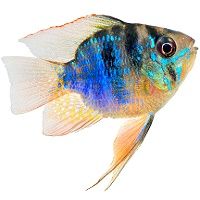What If Losing a Permanent Tooth Wasn't So Permanent?
A new study of two closely related fish species has produced surprising research that could someday lead to technology enabling humans to re-grow teeth.

The cichlid is a bony fish that can live pretty much anywhere and eat pretty much anything. It is a type of fish whose members are distinguished by a common characteristic—the fusion of the lower pharyngeal bones into a single tooth-bearing structure. You may have encountered a cichlid or two, either at the dinner table (tilapia) or your child’s bedroom aquarium (angel fish).
Why am I writing about cichlids for Dentist’s Money Digest? Because of those teeth! The loss of a permanent tooth in humans has been a vexing problem for dentists and people as long as there have been dentists and people. While many solutions to the problem abound, simply re-growing the tooth hasn’t been one of them. The cichlid is among very few species that can form successful replacement teeth. Can the genetics behind this ability ultimately lead to the same in humans?
Scientists at Atlanta’s Georgia Institute of Technology have shown in research published in Proceedings of the National Academy of Sciences that the structures responsible for growing new teeth may remain active for longer than previously thought, suggesting that the process might be activated in human adults.
The key to the research was the identification of epithelial tissues that lead to the formation of teeth and taste buds in embryonic fish. Unlike humans, fish have no tongues, so their taste buds are mixed in with their teeth, sometimes in adjacent rows. Researchers crossed two closely related species of cichlids—one that eats plankton and needs few teeth, and one that lives on algae scraped from rock formations, which needs many teeth—and then studied the genetic differences that, after a generation, allowed for the growth of additional teeth. They then used genomic analysis to find genes that are upregulated in the species that grew additional teeth.
Next, they boosted the growth of taste buds at the expense of teeth in some embryos, at a stage past what scientists had believed was the determining point of the epithelial tissue in embryos. Though they have very different purposes and final anatomy, teeth and taste buds originate in the same kind of epithelial tissue in the developing jaws of embryonic fish. These cells differentiate later to form either teeth or taste buds.
It’s a long way from this discovery to the ability to re-grow lost teeth. Even forming a new tooth wouldn’t be a viable option for humans without the underlying nerves and blood vessels necessary for them to work. But it is an interesting illustration of what might be possible far down the road.
Far, far down the road. For the immediate future, your business model is safe!